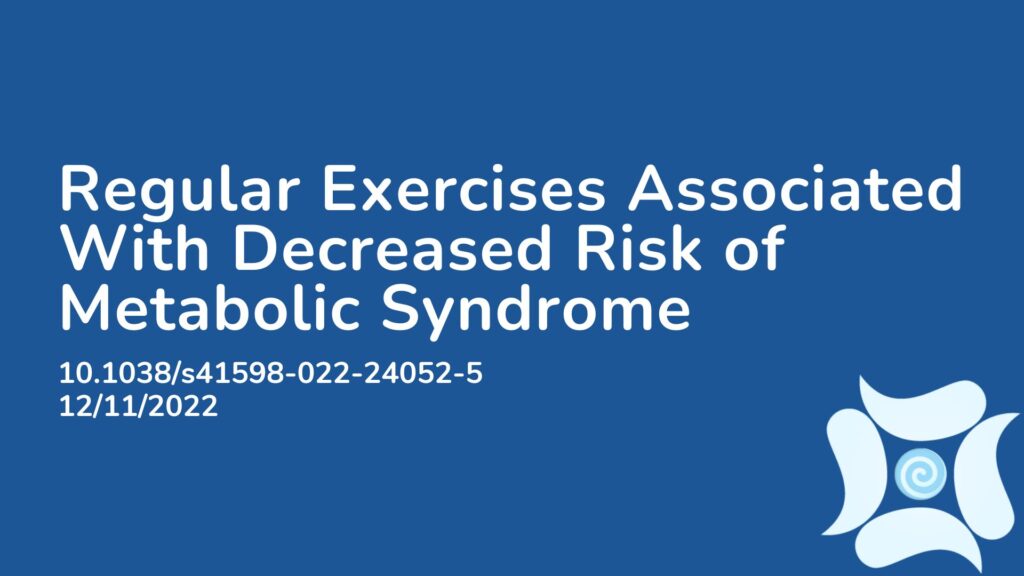Summary:
Metabolic syndrome (MetS) refers to a group of cardio-metabolic presentations such as obesity, high blood glucose levels, high blood pressure or high cholesterol. MetS is considered as a non-communicable disease, which are diseases known to be responsible for 73% of deaths worldwide. The aim of this study was to examine any associations between physical activity and the risk of MetS among men and women in South-Western Germany. The participants activity levels were assessed with a questionnaire and their metabolic health was measured via blood glucose levels, waist circumference, blood pressure and cholesterol. After a 12.5 year follow up, the results showed that physical activity is associated with a lower risk of MetS. The data also showed that even just 75 min of exercise per week may be associated with a reduced risk of MetS.
Abstract:
We examined the longitudinal association between physical activity (PA) and the risk of incident metabolic syndrome (MetS) among middle-aged, community-dwelling adults, including 591 individuals (314 females; mean (SD) age, 43.8 (8.5) years) who were free of MetS at baseline. Habitual and sports-related PA was assessed by a self-reported questionnaire. MetS was defined based on HDL-cholesterols, triglycerides, glucose or HbA1c, blood pressure, and waist circumference. We calculated Cox proportional hazard ratios (HR) and 95% confidence intervals (CI) using regression analyses. Over a mean follow-up of 12.5 years, 205 participants developed incident MetS. Four different sports-related PA measures were associated with a decreased risk of incident MetS: (1) Engaging in ≥ 75 min/week (HR 0.71, 95% CI 0.53–0.94), (2) maintaining a continuously high amount from baseline to follow-up of ≥ 75 min/week (HR 0.66, 95% CI 0.46–0.94), (3) starting from < 150 min/week at baseline to ≥ 150 min/week at follow-up (HR 0.65, 95% CI 0.45–0.94), and (4) increasing from < 16.6 MET-hours/week at baseline to ≥ 16.6 MET-hours/week at follow-up (HR 0.47, 95% CI 0.31–0.71). Thus, maintaining, starting or increasing sports-related PA is associated with a lower risk of incident MetS.
Article Publication Date: 12/11/2022
DOI: 10.1038/s41598-022-24052-5



